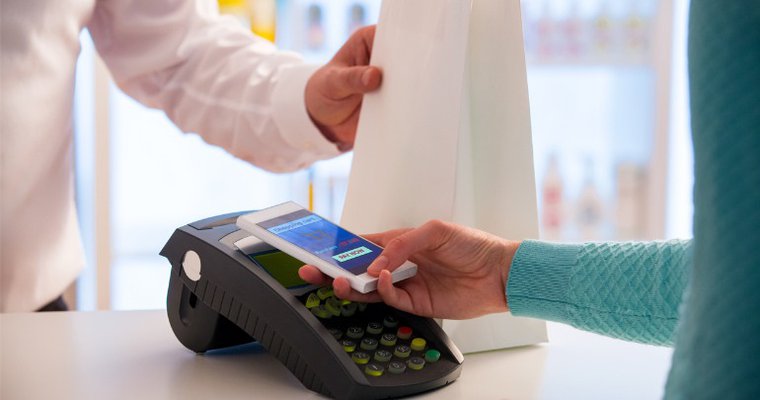Photo by istock.com
by Brad Paterson
Source: www.retailcustomerexperience.com, December 2020
Splitit CEO Brad Paterson shares the top six trends in mobile payment and mobile point of sale for the upcoming year.
Every retailer has felt the shift from in-store to digital over the last six months, but it’s also important for businesses to recognize the immense scope of this shift — beyond just a temporary reaction to the global coronavirus pandemic. According to IBM’s U.S. Retail Index, the pandemic has sped up the move from physical stores to digital by five years. This year alone, eCommerce spending is projected to increase by 20%.
While the economy remains uncertain, the growth of online and hybrid shopping is one development retailers can count on. More than ever, consumers are looking to mobile solutions to deliver flexibility and security, and brands cannot afford to hope for the storm to pass. The growth in e-commerce and the associated consumer demands are not going anywhere — no matter when the pandemic ends. And to keep pace, retailers must create the mobile payment processes to accommodate the unrelenting shift.
Here are six mobile payment trends every retailer should consider that are here to stay:
Contactless payments
Cash has carried an unhygienic stigma for years, based on the number of hands any single bill is exposed to, but now exchanging credit cards with a cashier or typing on a keypad is also under increased scrutiny as people look to minimize their touches.
A recent study from Mastercard has found that 51% of people now use some form of contactless payment. Contactless payments allow consumers to use scanning technology to complete a transaction with even greater security than traditional magnetic stripe methods, thanks to the continuously changing encryption in microchips and mobile device apps.
Mobile wallets
Mobile wallets are arguably the most convenient method of payment available to consumers by leveraging the popularity of smartphones. A mobile wallet turns a smartphone into a simple contactless payment mechanism by syncing the phone with a bank, debit, or credit card.
Statista estimates that there will be 3.8 billion smartphone users globally by 2021 — up from 2.5 billion in 2016. It’s the go-everywhere accessory that provides social connection, banking information, nutrition tracking, driving directions, and apps to assist almost any aspect of personal and professional life. Thanks to mobile wallets like ApplePay and GooglePay, a smartphone is also the most efficient way to complete a purchase, according to 55% of U.S. shoppers.
And as popularity for mobile wallets in purchasing and peer-to-peer transfers grows, so does the experiential evidence for the security of these apps.
Mobile POS technology
As consumers turn to contactless payment methods, retailers are aligning their hybrid shopping experiences and point of sale technology to match. Mobile point of sale refers to the wireless devices merchants use to accept payments anywhere — no longer tethered to registers at a single checkout location.
With MPOS, even the smallest brick and mortar stores, pop-up shops, and contractors can offer multiple checkout locations and payment solutions, safely distanced from other customers. With 73% of shoppers wanting advanced technology to enable more checkout options, MPOS is quickly becoming a non-negotiable for retailers of any size.
Social shopping
The ability to leverage personal relationships to more deeply engage customers is one of a retailer’s top assets. Considering that 78% of people trust the recommendations of family and friends more than any other source of information, brands can rely on social media sharing and engagement as social proof that cuts much deeper than branded messaging.
Beyond influencer strategies, retailers can use social media listening tools to learn more about their customers, cultivate reviews of positive experiences, increase customer service, and sell to customers where they spend a large portion of their time.
Biometric authentication
Just five years ago, biometric authentication may have seemed like something out of a futuristic Spielberg film, but it’s already all around us — every time someone uses their thumb to unlock their iPhone. Fingerprints, facial recognition, and voice recognition are all forms of biometric authentication that can be used to unlock mobile wallets.
Customers find security in the uniqueness of biometric authentication, causing the technology to attract significant investment. According to the Mobile Payment Authentication & Data Security 2019-2024 study, biometric authentication is expected to increase by over 1000% by the year 2024 — to $2.5 trillion in transactions. In 2019, $228 billion in transactions already relied on this technology.
Flexible payment options
In addition to the already growing demands for convenience and security when using mobile payments, the global pandemic has renewed many consumers’ commitment to maintaining a budget. Buy Now Pay Later solutions, or installment payment options, allow retailers to offer their customers all three: convenience, security, and responsible spending. By offering zero-interest installment options at the point of sale, merchants provide maximum flexibility, especially to customers making large purchases like furniture, exercise equipment, or a mattress.
As e-commerce purchasing soars, any retailer’s mobile payment strategy will factor in cart abandonment, which is estimated to reach as high as 80%. The convenience of flexible payment options, coupled with streamlined checkout processes can remove some of the largest barriers that prevent customers from completing the final step of the purchase.
Brad Paterson is CEO at Splitit

